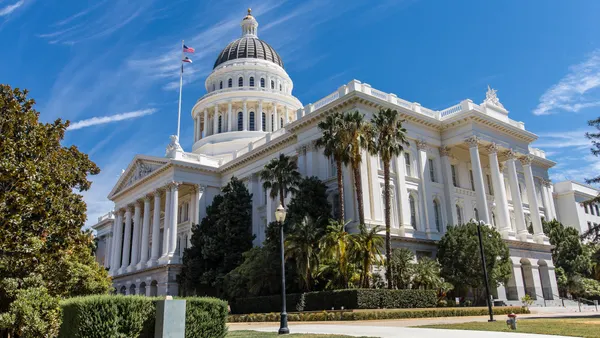CHICAGO — Many people have been moving to urban areas due to the opportunities they present, said panelists at the recent Chicago Forum on Global Cities. But work is changing and cities need to keep up, considering that about 69% of the world's population will live in cities by 2050, and at least a quarter of residents will need to re-tool their careers in the next few years.
The panelists named technology and the gig economy as two particularly influential forces in shaping cities' futures.
- Gig economy: "Most new jobs being created are contract jobs or gig economy jobs," said former U.S. Commerce Secretary Penny Pritzker, but those jobs often don't pay enough to support a person or family and offer benefits. "Our benefits system ... is really structured around full-time jobs, but that's not where the job creation is occurring," she said. "The quality of jobs is a significant issue in our country."
- Technology: About 75% of Americans worry for themselves or their loved ones about job loss due to an increase in automation and artificial intelligence in the workplace. "There's an enormous amount of angst out there ... People do not feel that the path for them is clear," Pritzker said, adding that people struggle to figure out how to adjust, adapt and thrive in communities where automation and AI are the norm.
Cities need to be aware of the mounting workforce challenges and help identify solutions, the panelists said. "One way or another, the cities are bearing the burden of that. If you have an unemployed population because someone's transitioning because their industry is declining and another is rising ... what do you do?" Pritzker said.
The panelists offered strategies for cities to engage and assist residents with handling workforce transitions in a rapidly changing job space.
1. Promote life-long learning
All of the panelists agreed the current model of attending school for one skillset and then not seeking ongoing education needs to change. With workers switching jobs more often than ever and industries rapidly disappearing and emerging, workers can be adaptive through continuing learning and training. Municipalities can modernize their educational programs to reflect workforce needs.
A challenge is figuring out "what's the burden borne by government [and] what's the burden borne by companies?" Pritzker said. She noted the need for greater data transparency so local governments know what types of jobs are in demand, and then the education system can be tweaked to better prepare people for those jobs.
2. Encourage non-classroom learning/training
Cities and their educational systems can help to transform the way life-long learning is viewed. While classroom learning is beneficial, panelists point to a need for more training outside of classrooms. Anne-Marie Imafidon co-founded of the group Stemettes, which focuses on STEM learning for girls, and recommends hands-on learning such as apprenticeships and internships. Practical learning helps to boost students' confidence in their newly acquired skills. "Within cities, that model works," she said. She stressed that this model also works for life-long learning and that sector of students might be less deterred from seeking skills upgrades if classes and workshops were less classroom focused. Plus, older, continuing learners need to be encouraged and feel confident in their training, rather than stigmatized, Imafidon said.
3. Find partnerships
Panelists all agreed city governments can't help residents on their own. Imafidon's Stemettes organization, for example, works with the business community to offer students hands-on learning in real business settings. Kate Gebo, Executive Vice President of Human Resources and Labor Relations for United Airlines, said, "It's got to be a partnership between the business community and the political community. We need the infrastructure to make it a livable city" because infrastructure, for example, allows employees to travel between their homes and workplaces.
"Business has a real responsibility here as well" to heighten awareness of what careers exist, Gebo says. She explained that representatives from United visit schools to educate students about lesser-known jobs within the aviation industry, such as IT, security and architecture. "Business plays a big role in creating opportunities" and private companies have to "work with different groups to get that pipeline of talent [and] to introduce different constituencies to ... the potential that's out there."
4. Diversify economies
Although technology is becoming more pervasive, tech jobs aren't the only ones in demand. Cities can aim to foster a diverse job base rather than becoming a one-industry town, which can lead to future demise. "The jobs that we're looking for in our city include those tech jobs" but also areas like healthcare and skilled labor, said Austin, TX Mayor Steve Adler.
5. Focus on equity, affordability
"The divide between those that are doing well and those that are not is exacerbating," Adler said. The problem isn't just the digital divide and making sure to incorporate innovation equitably throughout a city, but also how innovation disproportionately affects lower income residents. Plus, an influx of high-paying jobs, like those in tech, contribute to high costs of living. "Jobs are both attracting people and creating challenges for the community ... Foremost among those are affordability issues. We're finding that it's harder and harder for the people that are in Austin to be able to afford to stay in the city," he said.










